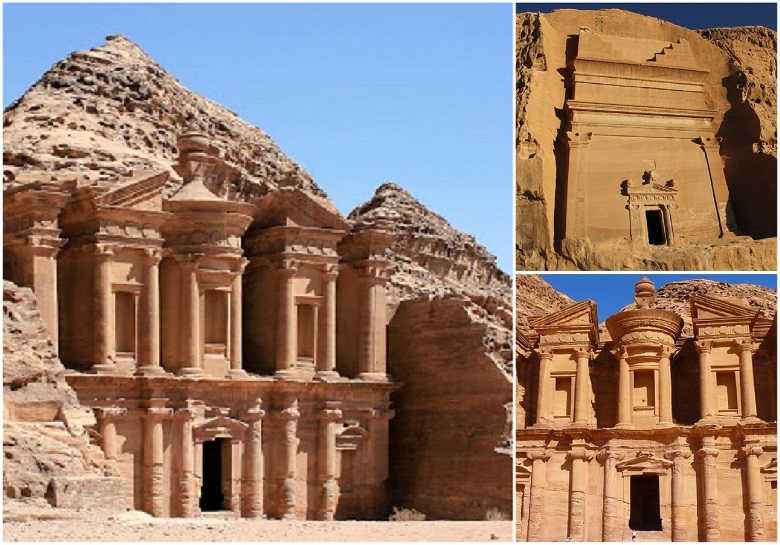Every city of this mysterious and influential civilization is carved into rocks in the middle of a lifeless desert. Who were these mysterious ancient Nabateans, why and where did they disappear without a trace?
Madain Saleh is a majestic and significant ancient city built in the pre-Islamic period. It is located in the north of Saudi Arabia. The city stands on one of the most important ancient trade routes, which connected such powerful states of those ancient times as Arabia, Mesopotamia, Syria, and Egypt.
The majestic ruins of Madain Saleh are a stunningly important archaeological site. It is very often compared to the capital of Nabatea, Petra. The Nabataean city of Petra is located in what is now Jordan. Historians learned the name of the city from ancient Greek texts means “rock”. The capital of the Nabatean state is Petra.
The most glittering and magnificent of these ancient ruins and the most iconic symbol of Madain Saleh is Qasr al-Farid. Qasr al-Farid is a tomb. Translated, this phrase means “lonely castle.” This is truly so – it is a lonely structure in the middle of the desert sands. It was carved from solid stone sometime in the first century AD, but the facade was never finished, which makes the tomb extremely interesting to research.
The shape of the tomb indicates that they were carved from top to bottom. Qasr al-Farid is just one of more than ninety, such monumental tombs carved here during the heyday of the Nabataean civilization.
Historians believe that the Edomites originally inhabited the valley. The capital of the Nabateans, Petra, was founded around 4-3 centuries BC. The Nabataean empire extended across what is now Jordan, Syria, Israel, and Saudi Arabia. It was an extremely developed civilization with a developed social structure and writing system. Modern Arabic writing is rooted in the Nabatean script.
Due to its location on an important trade route, Nabatea was an incredibly wealthy state. The caravans that passed here carried goods such as ivory, spices, silk, incense, medicines, metals, and precious stones. All the peoples of the Ancient World fought a fierce struggle for the right to own these trade routes. The Nabateans built their cities on the rocks to protect themselves from raids.
Their cities were very inaccessible and had their sources of water supply. This was especially true in the desert. There was only one way to their capital, Petra – this is a very narrow road between impregnable rocks. Even the almighty Roman Empire was unable to break and conquer this magnificent city.
The architecture of the Nabataeans in the Hellenistic style is amazing even now. Then it was just an unsurpassed masterpiece. It is primarily because the Nabateans were simple nomads. The city of Petra is equipped with an incredibly complex system of dams and irrigation canals. The houses in this city, all the buildings, royal palaces, and religious centers – all this miraculously fits perfectly with the surrounding sandy landscape. It seems that the city simply dissolves into the surrounding rocks.
In the 1st century AD, Nabatea nevertheless became part of the Roman Empire. It was an act of goodwill on the Nabataeans’ part because the Roman soldiers never conquered the impregnable city. The state became a Roman province and received the name Arabia Petreia. The Roman period was marked by constructing architectural monuments traditional for this culture – columns and a theater.
The Nabataean state ceased to exist in the 2nd century. Researchers believe that the decline of this advanced society was due to a change in the network of trade routes. The Syrian city of Palmyra has become the new hub of this network. The caravans from Persia, India, China to Rome ran through it. The importance of Nabatea began to diminish and then completely disappeared. The state fell into decay. Residents left their beautiful cities in search of a better life.
Today, Nabatean cities are included in the UNESCO World Heritage List. Leading archaeologists and researchers work here, and restoration work is underway. Thousands of tourists visit the region every year to enjoy a magnificent and amazing example of the stunning ancient architecture of the enigmatic Nabatean civilization.
